Eggs are Nourishing enough, and good Food they increaſe Seed, qualify the ſharp Humours of the Breaſt; are good for pthiſical People, eaſily digeſt, eaſe the Piles, and are looked upon to be good to make the Voice loud and pretty. - Louis Lémery, Traité des Aliments (English translation), 1706
Eggs are such a very French thing. We find eggs in the earliest cookbooks, and we know that they were a primary kitchen staple and ingredient since the earliest days. Eggs were used cooked - hardboiled, soft-boiled, poached, or fried - as an integral part of other recipes and dishes; and eggs were used raw to thicken sauces and bind stuffings, even back in medieval times. They were made into stand-alone dishes, like the omelette, a popular dish since early days. And, of course, they were used for pastries. But while eggs were both popular and necessary ingredients, the French had to wait for the 19th century for the egg to veritably explode. Entire cookbooks were published vaunting the exciting new ways in which eggs - cheap, versatile, AND nutritious - could be used, Alfred Suzanne’s 120 Manières d’Accommoder les Oeufs (1890), Ferdinand Grandi’s Les 130 Manières d’Apprêter les Oeufs (1893), and 250 Manières pour Apprêter les Oeufs: suivies de quelques recettes inédites de cuisine (1898), Marius Berte’s Oeufs à la Parisienne en 125 Recettes (1878), and A. Bautte’s Les Oeufs avec 1,000 Manières de les Préparer & de les Servir (1906). 1000 ways to prepare and serve eggs!! Sacré bleu!
But….but… What's that got to do with the price of eggs? as my mom used to say. Often.
My friends in the States are suffering the skyrocketing cost of eggs. I won’t sully my Substack food posts with politics, but an administration who campaigned on lowering the price of eggs, one of their main focuses once in office if you vote for us!!! pledging day 1 to slash prices, including the cost of eggs, have done the opposite. Instead, they are focusing on other things, erasing women and minorities from their achievements (including NASA), erasing our trans friends and family members, firing veterans, deporting immigrants, in short, hurting rather than helping. Oh, and destroying the government agencies that normally would combat and inform the public on the outbreak of bird flu.
That said, my friend Rachel reminded me of this in a comment on my last post in which I shared a cake recipe…using eggs, of course. Other American friends chimed in, agreeing that eggs have become a precious and rarely used commodity.
And I promised to share a cake recipe that is completely, 100% egg-free. And I am throwing in a couple of other favorite eggless recipes for your dessert pleasure.
Eggless Chocolate One-Bowl Cake
This cake is denser than my other chocolate cakes, dense to the point of being somewhat chewy, which I love. This is a moist, very chocolaty cake that tastes wonderfully like a candy bar. Perfect with or without frosting or ganache and dusted simply with powdered sugar, this chocolate cake is amazingly addictive!
1 ½ cups (210 grams) flour
1 cup (200 grams) sugar
¼ cup (30 grams) unsweetened cocoa powder
1 teaspoon baking soda
½ teaspoon salt
¼ teaspoon ground cinnamon, optional
1 cup (250 ml) water
¼ cup (62 ml) + 2 tablespoons vegetable oil
1 tablespoon vinegar (I use cider vinegar)
1 teaspoon vanilla
Preheat the oven to 350°F (180°C). Grease a 9-inch (23 cm) round cake pan with vegetable oil, bottom and sides, then line the bottom with a round of parchment paper.
Combine the flour, sugar, cocoa, baking soda, salt, and ground cinnamon, if using, in a large mixing bowl. Combine the water, vegetable oil, vinegar and vanilla. To avoid lumps and produce a smooth batter, whisk the wet ingredients slowly and gradually into the dry until well blended and smooth. Pour into the prepared pan and bake for about 30 to 35 minutes or until the center is just set and a tester comes out clean.
Remove from the oven to a rack, let cool for about 10 minutes, then slide a sharp knife blade around the edges to loosen, turn the cake out of the pan, peel off the parchment paper, flip back upright and let cool completely.
Top with my favorite ganache using any good dark 70% chocolate.
Fabulous Eggless Coffee Pudding
If left in the refrigerator to chill and set overnight, the sugary sweetness will mellow.
1 ½ cups (375 ml) blend of cream (heavy, light, or half and half) + milk (whole or lowfat)
½ cup (125 ml) prepared strong coffee
2 tablespoons (10 grams) cornstarch
Pinch salt (scant ⅛ tsp)
¼ cup (50 grams) granulated light brown or white sugar
1 teaspoon instant espresso powder
Have 8 espresso/demitasse cups or 4 pudding dishes ready.
Measure out the cream and milk in a medium-sized saucepan (too large a saucepan and your liquid will be too shallow and it will cook too quickly). Place the saucepan over low heat and bring slowly up to a simmer – just under a boil, as it begins to steam and tiny bubbles will begin to form around the edges of the liquid.
As the milk and cream are slowly heating, whisk the cornstarch, salt, sugar, and espresso powder together in a bowl; add the liquid coffee and whisk until the dry ingredients are dissolved and there are no lumps.
As soon as the cream/milk comes just to the boiling point (to a simmer), whisk it into the coffee mixture then pour it all back into the saucepan. Continue cooking – and whisking – over low heat until soft bubbles appear. Allow the mixture to boil, whisking, for 1 minute.
Remove from the heat and pour the pudding into a heatproof/Pyrex measuring cup with a lip (this just makes it easier and cleaner to pour). Carefully divide among the demitasse or serving cups. Cover each with a piece of plastic wrap and refrigerate until chilled and set.
Vanilla Bean Panna Cotta
3 cups (750 ml) cream, or a combination of cream, heavy or light, and whole milk
2 teaspoons (8 grams) unflavoured powdered gelatine
1 vanilla bean
½ cup (100 grams) sugar
Note: I used 1 cup (250 ml) each heavy cream, light cream, and whole milk although I often use half heavy cream and half low-fat milk.
Note: The vanilla bean can be replaced with ½ teaspoon vanilla extract; add the vanilla extract after step 5.
Have 6 pudding glasses or terrines ready.
In a medium, heavy-bottomed saucepan, place 1 cup (250 ml) of the cream/milk mixture and sprinkle the gelatin on top. Allow to sit for 5 minutes, gently tapping the gelatin below the surface of the liquid with the back of a spoon.
Turn the heat under the saucpan to low and allow to gently heat and cook for a 3 - 5 minutes until the gelatin dissolves completely and the golden splotches floating on the cream disappear.
Using a sharp paring knife, split the vanilla bean lengthwise down the centre and scrape out the seeds.
Add the remaining cream/milk mixture, the sugar, the split vanilla bean and the scraped seeds to the gelatin mixture and continue to heat gently, whisking lightly, just until the sugar dissolves; this should take a few minutes. Allow the cream to heat thoroughly.
Remove from the heat and allow to sit for 5 minutes to allow the vanilla to infuse the cream.
Remove the vanilla bean and discard or dry and use to make vanilla sugar.
Stir or whisk the panna cotta to distribute the vanilla seeds throughout the liquid and immediately and carefully pour the mixture into glasses or small bowls and chill for at least 6 hours, preferably overnight.
Thank you for reading and subscribing to Life’s a Feast by Jamie Schler. Please leave a comment, like and share the post…these are all simple ways you can support my writing and help build this very cool community. Let me know you are here and what you think. You are so very appreciated.
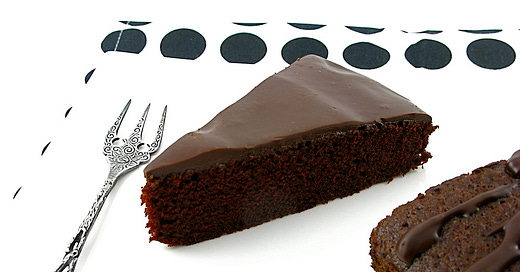



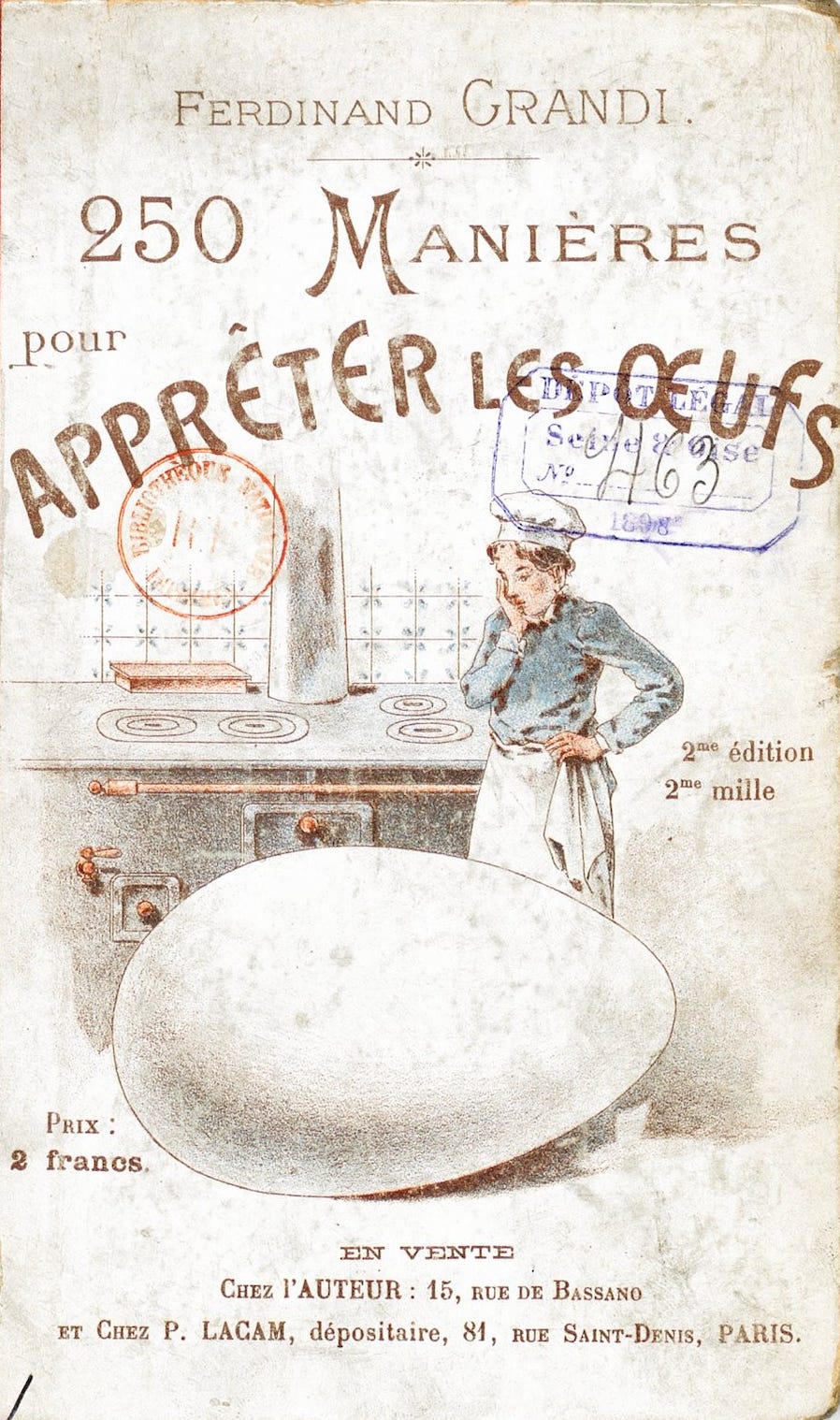

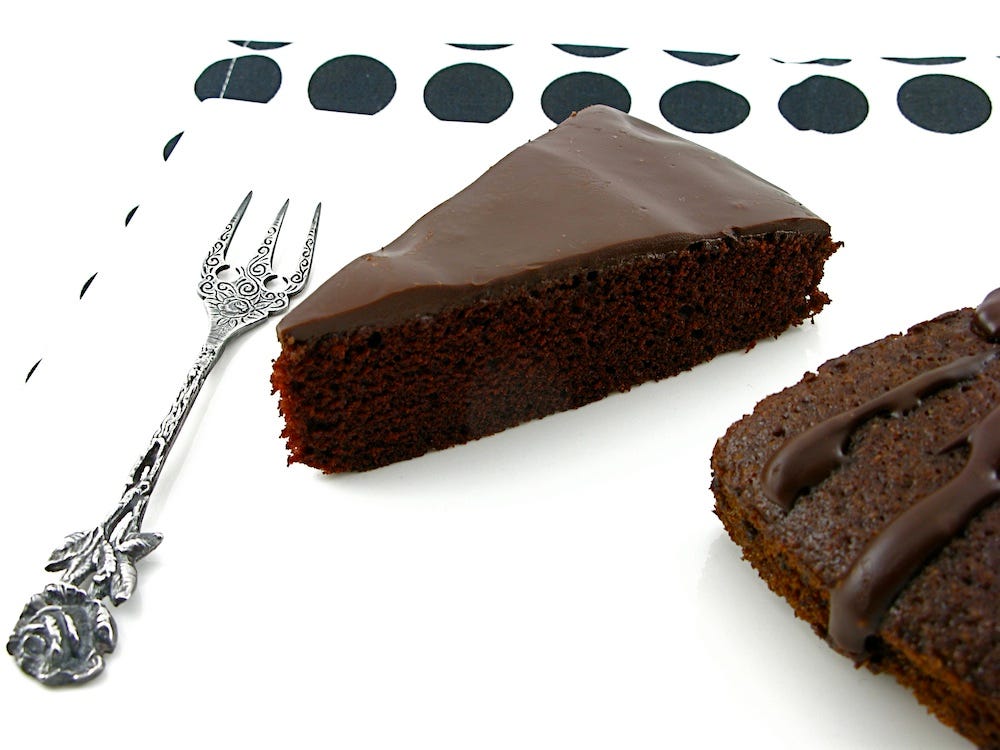

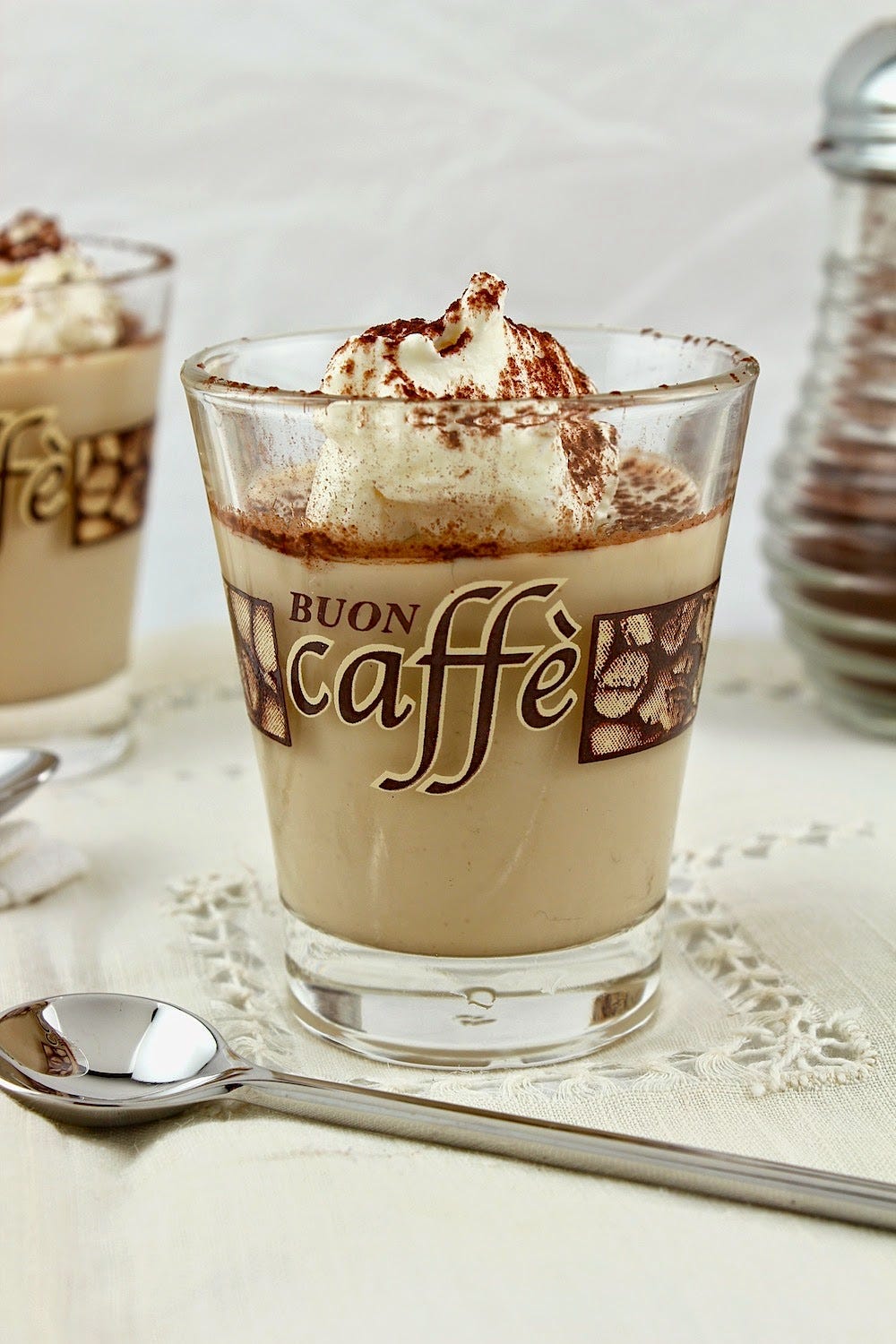

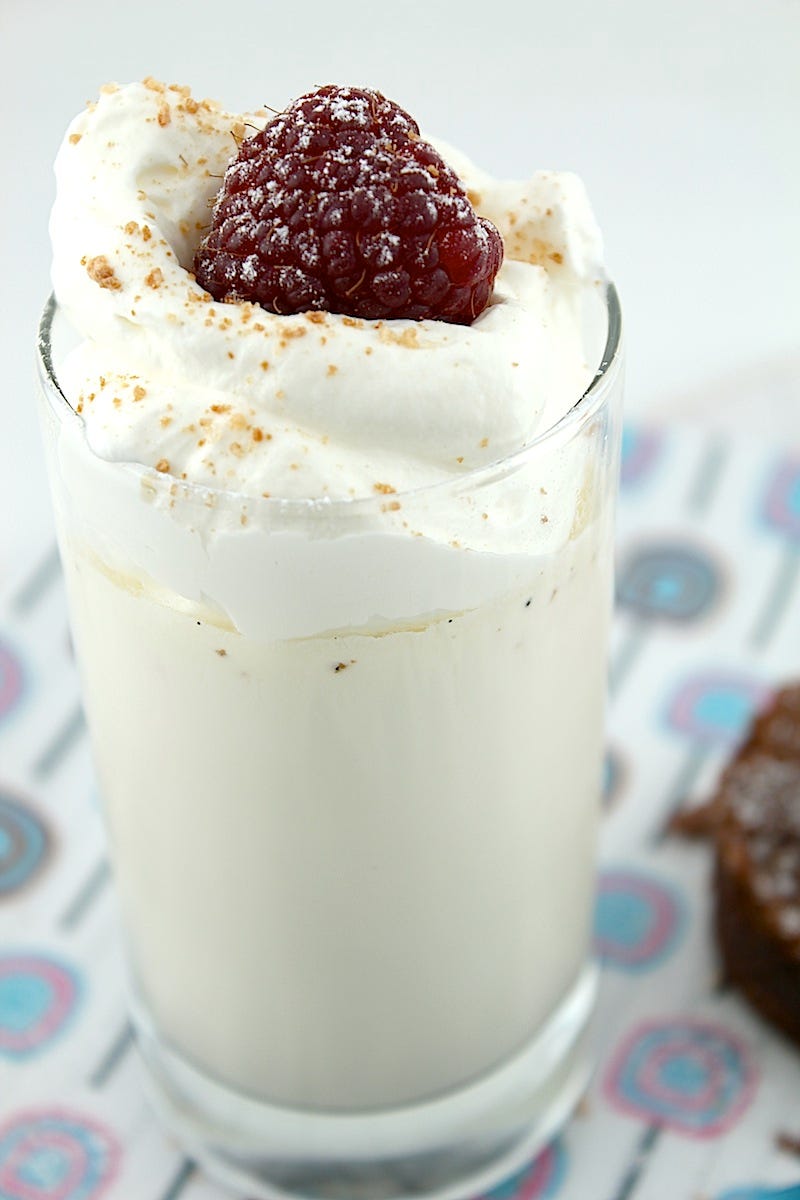
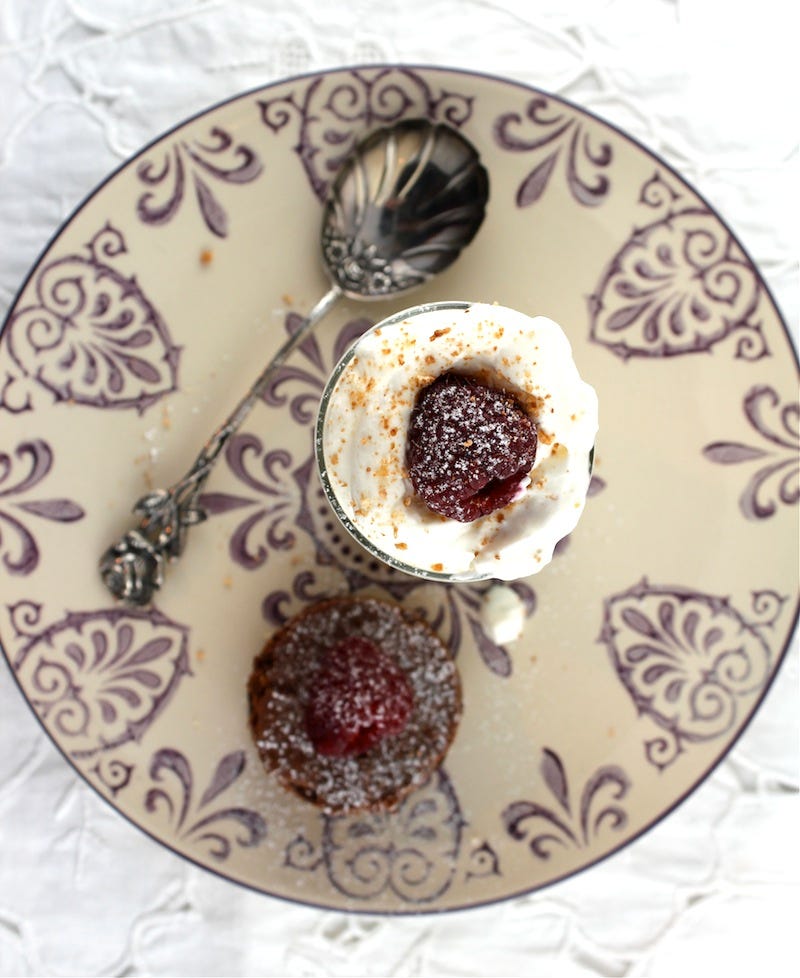
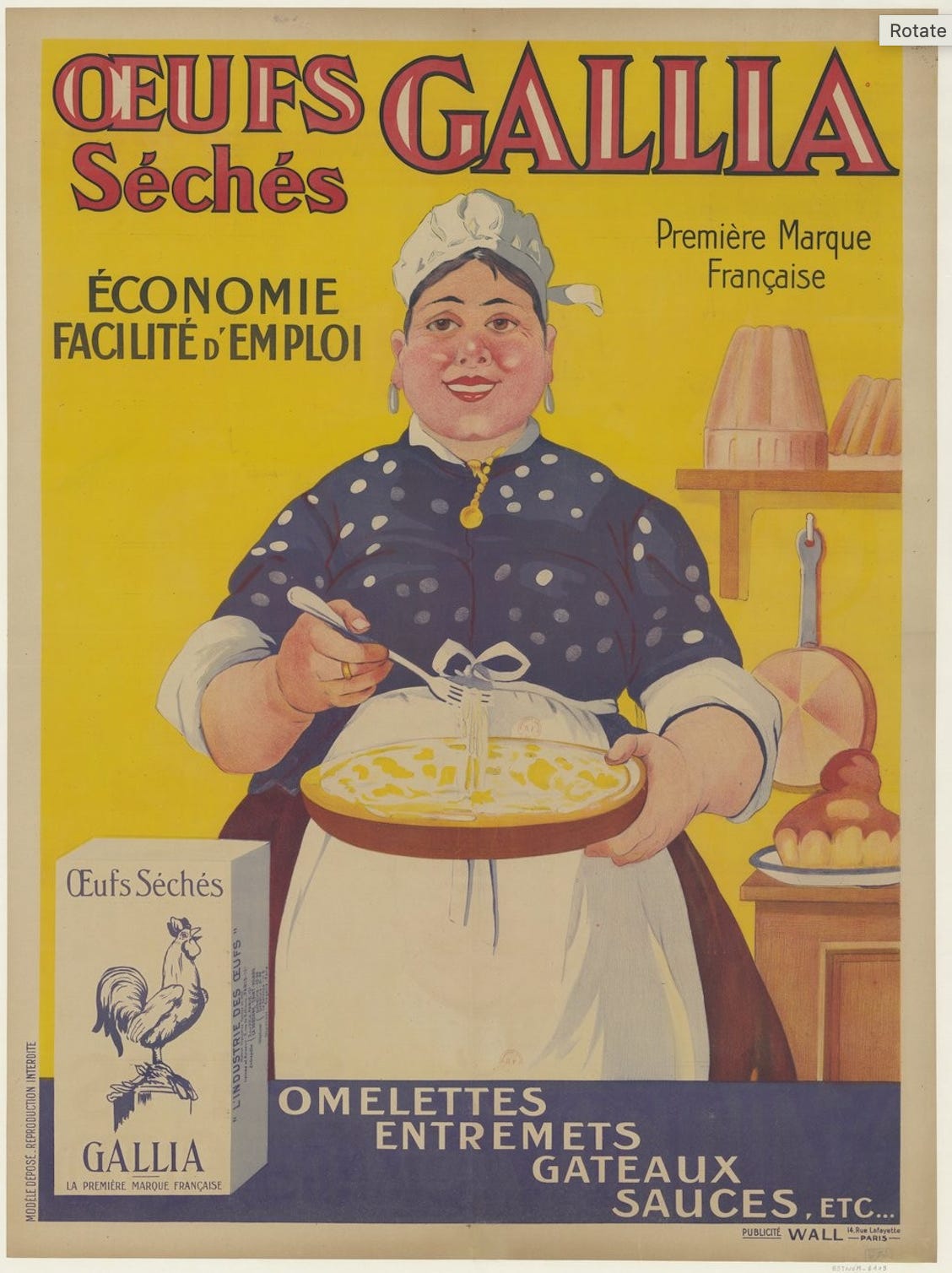
Thank you for these lovely recipes as well as the information on historical use of eggs. The book covers were a really nice touch.
Thanks for the no-egg recipes! I truly enjoy your jaunts into the history of cookery and ingredients, too!